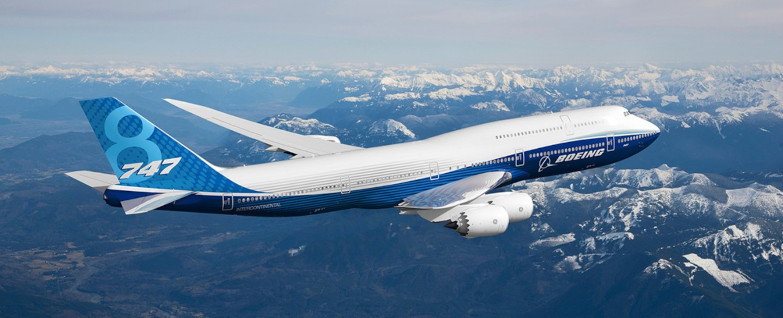
Boeing 747-8 Details and Seat Map
Introduction to the B747-8
The new-generation 747-8 long-range wide-body, four-engine jet airliner was introduced in 2005. The aircraft is characterised by an extended fuselage, updated wings, engines and onboard systems. A solid set of positive qualities and characteristics makes the Boeing 747-8 the most economical and highly efficient airliner in the family. The passenger version was developed as an alternative to the French Airbus A-380. The Freighter modification currently carries up to half of all cargoes transported by air.
History of creation Boeing 747-8
Boeing Corporation considered the options of creating a new model 747X with an expanded capacity since the late 90s. The company’s designers began development of the airliner in 2005, applying most of the technical and scientific achievements of two decades. The creation of the new model was a response to the prototype of the future A380, designed by the French corporation Airbus.
However, the 747X did not generate enough interest among investors to start mass production. A number of technical innovations being developed for this aircraft were used later in the development of the Boeing 747-8.
Development
The Boeing 747-8 is considered the first elongated aircraft in the 747 family. Initially, engineers planned to equip the aircraft with a cabin and power units that were installed on the 787 model. Later the aircraft was equipped with improved engines in order to achieve increased efficiency and environmental friendliness.
In 2008, the “Freighter” modification designed for cargo air transportations was put into serial production.
The first air carrier to order a passenger Boeing 747-8i (Intercontinental) was the German company Lufthansa, which operates to more than 70 countries. In 2009, Korean National Airlines, Luxembourg carrier Cargolux Airlines International S.A and a number of other companies purchased different-sized batches.
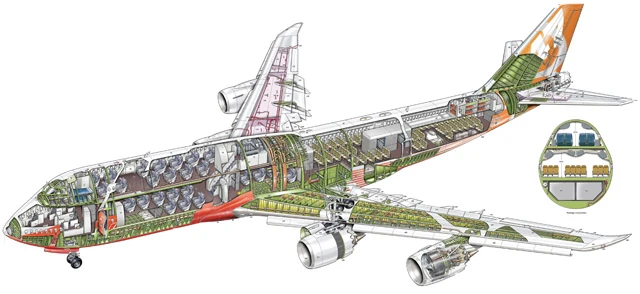
747-8 Technical Details
Flight Data
| Flight Range (km) | 14320 |
| Cruising Speed (KM/H) | 917 |
| Maximum Speed (KM/H) | 956 |
| Takeoff Length (M) | 3100 |
| Engines | 4 × General Electric GEnx-2B67 |
| Engine Thrust (kN) | 4 × 296 |
| Max. Fuel Capacity (L) | 238610 |
| Max. Flight Altitude (M) | 13100 |
Passenger Cabin
| Crew | 2 pilots |
| Number of Passengers | 467 (standard configuration), 605 (maximum) |
Dimensions
| Length (M) | 76.25 |
| Height (M) | 19.40 |
| Wingspan (M) | 68.40 |
| Wing Area (sq. m) | 554.0 |
| Fuselage Width (m) | 6.50 |
| Cabin Width (m) | 6.10 |
Mass
| Empty Equipped Mass (kg) | 220130 |
| Max. Takeoff Weight (kg) | 447700 |
| Max. Landing Weight (kg) | 312070 |
| Max. Zero Fuel Weight (kg) | 295290 |
| Cargo Compartment Volume (cu. m) | 176 |
Boeing 747-8 Modifications
The Boeing 747-8 is the largest passenger aircraft in the Boeing 747 family and one of the largest in the world. This majestic airliner combines advanced technology, increased size and outstanding performance to provide maximum comfort and flight efficiency.
The 747 800 is available in two basic versions. Both modifications are enhanced versions of the classic Boeing 747, but are designed for different types of operations.
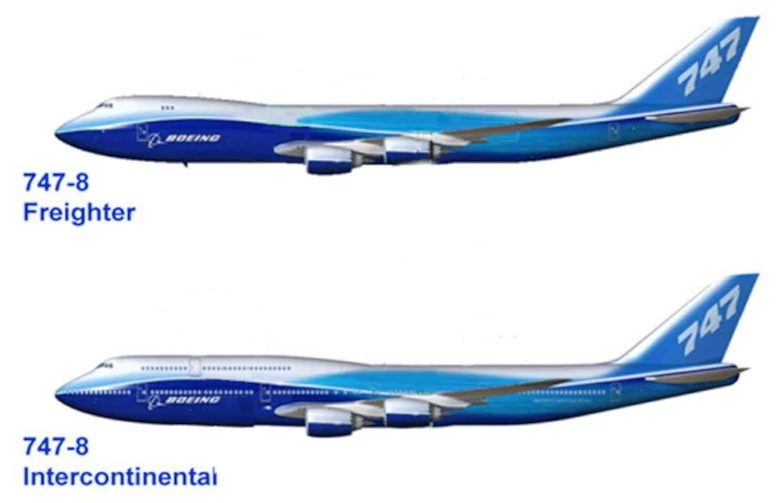
Boeing 747-8 Cabin
It can accommodate up to 467 passengers in the standard three-class configuration and 580 seats in the two-class configuration, and up to 605 in the maximum configuration.
First Class
The location of this class is the main first deck of the ship. The first class is the most prestigious and can accommodate no more than 8 passengers. It is distinguished by VIP level of service, excellent cuisine, comfortable chairs and other attributes necessary for comfortable air travel.
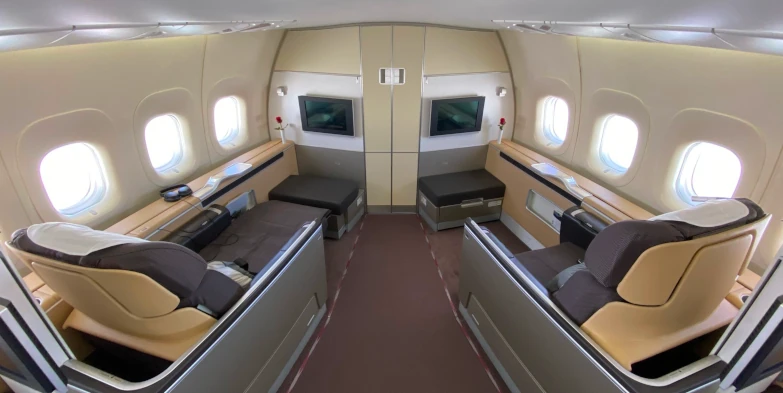
Business Class
Business Class area is located on 2 decks: the first one is designed for a dozen passengers, the second one accommodates 8 people. The class is characterised by a high level of service. Food is served on porcelain dishes with cutlery. The staff is ready to solve any problems of business class customers, but the ticket for it costs much more than the price of a ticket in economy class.
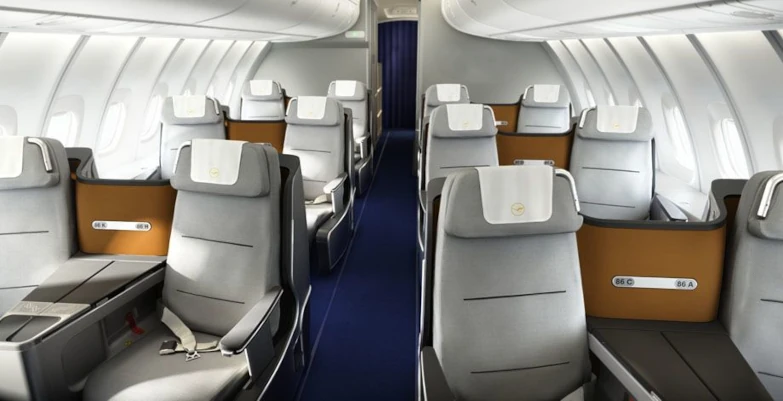
Premium Economy Class
The area with 32 seats is located in the central part of the cabin on the 1st and 2nd decks. It does not differ much from the economy class, but offers an extended range of food and beverages. There are also more comfortable seats with more legroom and better service.
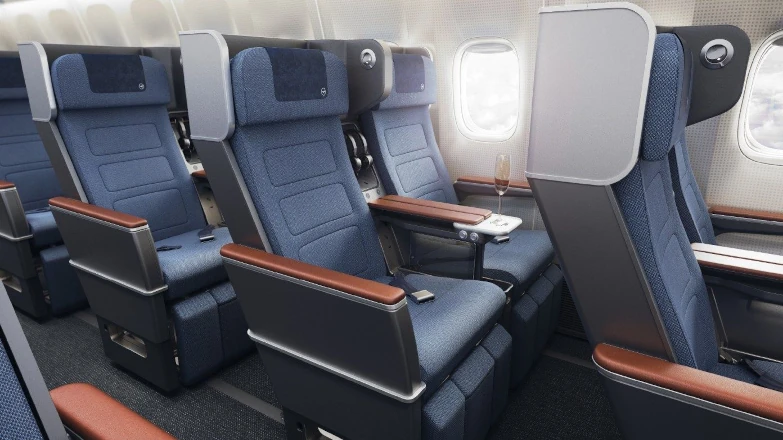
Economy Class
Located on 2 decks in Boeing’s tail section. The classic configuration of the 747-8 aircraft has 244 seats on each deck. In contrast to the configuration, the economy class can seat up to 600 people. Because this class is at the rear of the cabin, it is characterised by slow service and less comfortable seats. There are power outlets, Wi-Fi and travel kits for passengers.
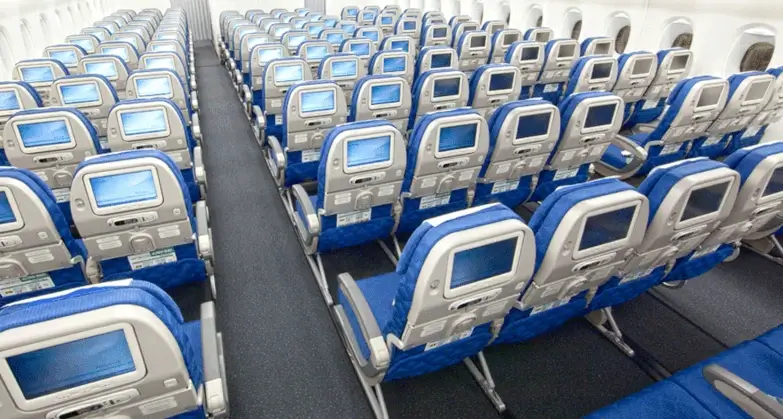
Seating Tips for a Comfortable Flight
For first class passengers, it is better to choose seats in the middle of the aircraft, as the location of the first seats can cause discomfort during a long flight due to their location on a curve.
On the cabin diagram you can notice that the best seats in business class are located on the 2nd deck in the centre of the cabin. For economy class passengers it is recommended to choose the front seats, where overweight people or pregnant women can easily fit.
The last rows of seats in economy class are no less comfortable. They have more free space, but food and drinks are delivered to passengers last.
Boeing 747-8 Seat Plan Comparison
| Airline | Classes / Configuration | Total Seats |
|---|---|---|
| Boeing 747-8 Air China | First / 1-2-1 Business / 2-2-2 Economy Premium / 3-4-3 Economy / 3-4-3 |
365 |
| Boeing 747-8 Korean Air | First / 1-1 Business / 2-2-2 Economy / 3-4-3 |
368 |
| Boeing 747-8 Lufthansa | First / 1-2-1 Business / 2-2-2 Economy Premium / 3-4-3 Economy / 3-4-3 |
364 |






